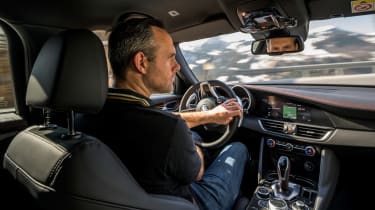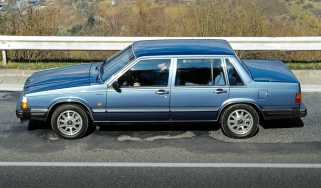Alfa Romeo Giulia review – interior and tech
Despite taking inspiration from the best German systems, the Giulia's interior tech does fall short of the best in class
Alfa Romeo’s ‘skunkworks’ development of the Giulia may have brought it to market in a shorter time frame than usual, but it has not come without compromise. In Alfa Romeo’s defence, one must look hard to see where the money has been saved, but there are signs of it in the interior.
The design itself is attractive, with reoccurring Alfa Romeo hallmarks like cowled instruments and a lovely three-spoke steering wheel. Instead, it’s the use of materials that leaves a little to be desired. Crucial touch points like the gearstick and infotainment controllers feel cheap and flimsy, and is an area where the Audis, BMWs and Mercedes of this world have taken to the nth degree.
In distinct contrast to these are the lovely, albeit optional, aluminium paddles, which feel like they have been taken straight off an Italian supercar. Specifically, they're much like those found on the Ferrari 488. No rival offers such a satisfying method of interaction with its automatic gearbox.
Space wise, the Giulia is about right for the class, with more passenger room than the titchy Jaguar XE, but not quite as cavernous in the back or boot as an Audi A4. The lack of an estate variant will limit its appeal to some buyers, but the Stelvio SUV is likely to fill the void to those who don’t mind driving around something a little taller.
The infotainment system takes plenty of cues from German systems, displayed on a screen that is hidden behind a black panel when not in use. The layout is effective and although it is not as crisp or slick to use as the benchmark BMW iDrive or Audi MMI, it’s not so bad as to be a deal-breaker like the system in a Lexus IS.



